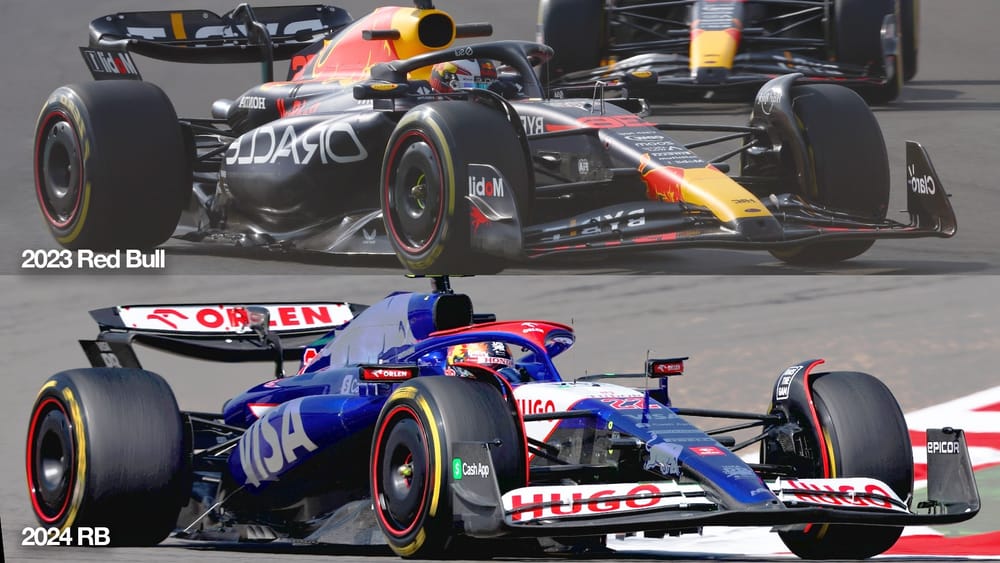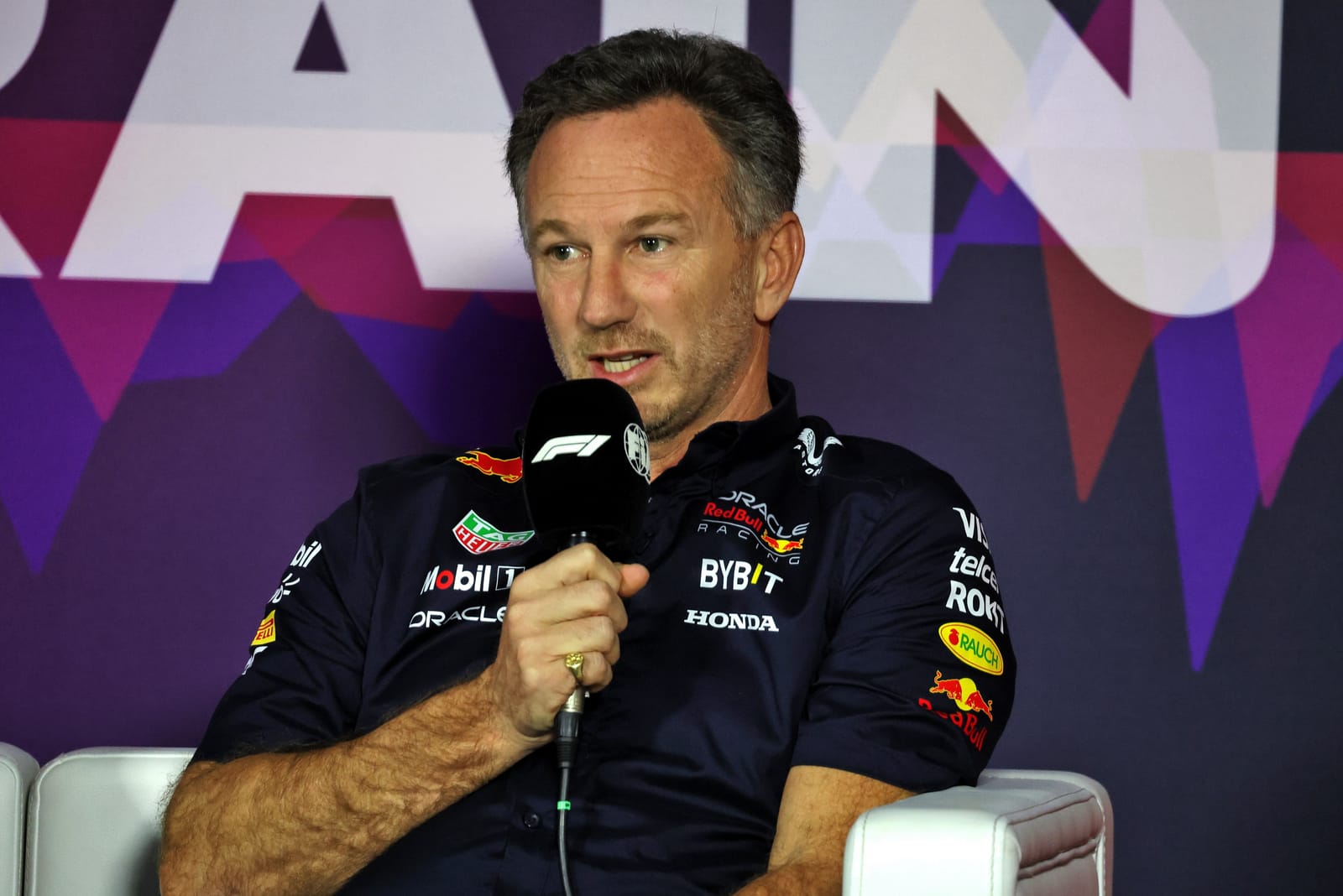Up Next

The relationship between Red Bull and its rebranded second Formula 1 team RB feels like it’s under more scrutiny now than for many years, given all the attacks coming in from McLaren in particular.
But does the new RB actually look like a Red Bull clone on track?
We tasked our technical expert Gary Anderson with an in-depth comparison.
To compare these two teams I think we can really only look at Red Bull 2023 versus RB 2024. No one has gone down the Red Bull 2024 design route (yet), and I doubt very much Red Bull was forthcoming with much concept information, even to its sister team.
They share lots of mechanical parts, including the gearbox and rear suspension and front suspension, which makes it cost effective for both teams, but that is acceptable in the regulations - actually, by defining what you can and can’t do in the regulations this is even encouraged.
We also need to remember that when these regulations were being put in place designers and technical directors were complaining about them being too prescriptive. In reality that all went by the wayside when they got into the design and discovered that there was actually room for individual expression.
I suppose three years in we’re seeing that was not really the case and they were correct with their original opinion as the cars converge. Most teams have now taken their design inspiration for 2024 from the 2023 Red Bull.
FRONT WING
This is where it all starts - this area of the car sets up the airflow structure that the rest of the car has to deal with. And we can see that other than what the regulations allow you to share - ie. the front suspension - Red Bull’s two teams are using quite different front wing concepts.
The trailing edge of the rear flap (green highlight, below) is very different. Red Bull reduces the spanwise loading as the wing goes outboard, while RB maintains a fairly uniform loading as the wing goes outboard.
This means the flow structure to the leading edge of the floor and the sidepod inlet will be quite different between the two cars.
Also, the leading edge profile (yellow highlight, above) is quite different - the central section (red ellipse) is actually raised on the RB as opposed to the drooped Red Bull version. Red Bull also has a slot gap between the nose and the wing’s most forward element, RB doesn’t.
SIDEPODS
There is definitely more similarity at the side of the cars.I wouldn’t go as far as to say the RB design is a copy, but with the regulations being as they are there are not too many different ways of getting it right.
The green highlight below shows the radiator inlet is from the same family, but that is true for most cars in the pitlane. The RB version is shorter and stubbier, but that’s about where it ends.
The red highlights are the main body feature lines. They have relatively little to do with the overall performance and are mainly developed to house the internal components.
However, areas like the section inside the yellow ellipse are relatively important to optimising how the mass airflow is directed over the upper floor surface, and again this is fairly different between the two cars.
The area at the front of the floor (inside the magenta ellipse) is very important to the performance and again it is fairly different.
OVERHEAD
Overhead we can see that the body lines (this time in yellow) are again fairly different.
The area inside the green ellipse - the outer floor splitter - is similar, but again this comes from interpretation of the regulations and it’s very visible, so something that I would expect every team to have a few hundred photographs of.
AIRBOX AND REAR WING
The RB halo has a trim vane on top of it to realign the flow in that area. The intake shape - which has to house the rollover bar - is a different profile to the Red Bull RB19.
Every team will have a family of wings for different downforce levels, but comparing these two show the RB version is much more of a ‘V’ (yellow highlight).
The outer corner minimum radius (in the green ellipse) is defined in the regulations, so no surprise it is similar. Red Bull had a ‘V’ section cutout (red ellipse) on the trailing edge of the rear wing behind the DRS actuator in 2023; RB hasn’t followed that direction.
The detail at the outer rear corner of the flap (inside the blue ellipse) is also different. RB has a sharp corner which will generate more of a vortex; Red Bull radiuses it off to reduce drag.
BEAM WING AND DIFFUSER
Again, the regulations define the exit size of the diffuser (red highlight), so every team is at the maximum.
The beam wing position (green highlight) is defined with a rectangular area inside view in the regulations, so no surprise that it is vaguely similar. Again depending on the track requirements this will change.
CONCLUSION
In my opinion the RB is no more of a copy of the 2023 Red Bull than any other car on the grid.





